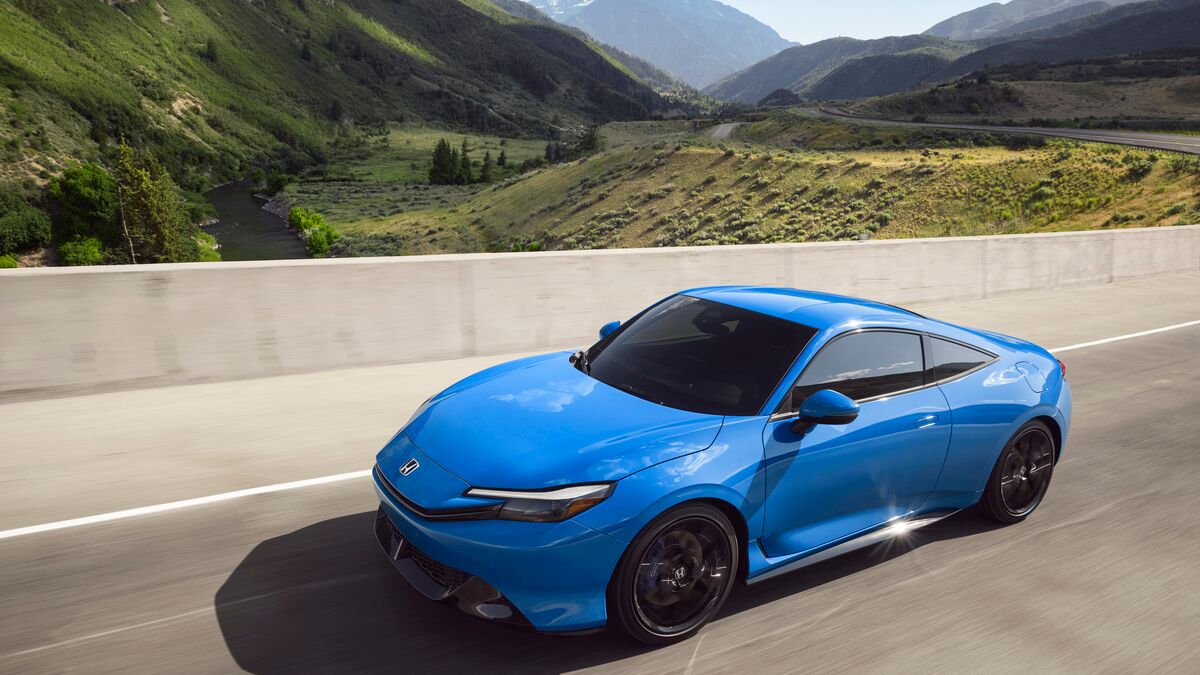The torch has now been passed, as the first of the new-generation 2012 Toyota RAV4 EV prepares to hit the road in select California markets later this summer. Considerably more sophisticated than its pioneering predecessor that Toyota manufactured from 1997 to 2003, this latest iteration was designed and is being produced in conjunction with Tesla Motors. The well-known maker of its own Roadster and Model S Sedan is providing all of the powertrain components for the new RAV4 EV, which will undergo final assembly at Toyota’s existing RAV4 plant in Ontario, Canada. We recently had a chance to spend an entire day checking out this greenest member of the family on a number of different venues in Southern California and came away quite impressed with this eco-focused alternative that transitioned from concept to finished product in less than 24 months.
Like the early Toyota RAV4 EV prototypes we drove last April, the volume-build model incorporates a number of unique cosmetic and functional touches to complement its electric motivation. Exterior changes — both seen and unseen — add more visual flair to the 2012 RAV4 EV while helping trim critical aerodynamic drag. The recasting starts with a tidier front fascia design, sleeker side mirrors and a larger and a more efficient rear spoiler, all set off with appropriate blue EV badges and the choice of Blizzard White Pearl, Shoreline Blue Pearl, Classic Silver Metallic or a fleet-only Super White finish. The efficiency effort also extends to the unique lighting array that matches halogen projector high beams with low-draw LED low-beams/running lights up front and LED taillamps behind smoked lenses — a combination that reduces electrical drain by 58 percent compared to a regular RAV4.
Equally critical are the less obvious tweaks. These include subtle front/rear wheel-well "spats" that more effectively redirect airflow out and around the structure as well as full underbody fairings. Collectively, the changes cut the RAV4 EV’s coefficient of drag from 0.35 to a class-leading 0.30.
Inside, the new Toyota RAV4 EV boasts a similar makeover aimed at enhancing visual impact and operational efficiency. A new instrument cluster with a host of driver-selectable EV-specific readouts and data dumps teams with an 8.0-inch TFT multi-information touch-screen center display that controls the new Buttonless Premium IntelliTouch Navigation system — a first for Toyota — and provides features like the automaker’s Entune infotainment package, XM satellite radio and a full range of dedicated EV applications. The RAV4 EV’s recast center console contains unique switchgear for the multi-mode dual-zone electric climate control system that offers three settings to help reduce power draw along with a Prius-style electronic shift lever that features a separate "Park" button.
Although the EV transition brought no new soft-touch surfaces to the basic hard plastic that dominates the RAV4 cabin mix, it did net new upholstery that pairs custom "Neutron" fabric with faux-leather SofTex bolsters on the seats. The front buckets also incorporate super-efficient heating elements that greatly reduce energy usage compared to the conventional heating setup while still keeping passengers comfortable in cold weather. In marked contrast to some other electric vehicle conversions, the RAV4 EV sacrifices no interior room to achieve its Zero Emissions Vehicle (ZEV) status. It retains the RAV4’s standard 60/40 folding rear seat and boasts 37.3 cu ft of cargo space when in 5-passenger configuration and 73.0 cu-ft in max-toting mode.
Unlike the proof-of-concept Phase 0 fleet that used motor/battery/controller elements from the Tesla Roadster, the production 2012 RAV4 EV gets its motivation from powertrain components that share the same design and technology pedigree with those in Tesla’s new Model S — albeit with specific revisions to meet Toyota requirements for this application. The same 154 horsepower AC induction motor is backed by a single-speed transmission that sends power to the front wheels while a large, 845.5-lb/41.8kWh liquid-cooled lithium-ion battery pack mounted low in the floor and protected by a secure safety structure provides energy.
The RAV4 EV system features both Normal and Sport modes. In the former, the motor develops 218 lb-ft of peak torque and allows this super-clean compact SUV to reach 60 mph 8.6 seconds and hit a top end of 85 mph. In Sport mode, those stats change to 273 lb-ft, 7.0 ticks and 100 mph — attention-getting to say the least and with acceleration that falls within a few tenths of a conventional RAV4 V6. While EPA numbers have yet to be issued, Toyota anticipates a real-world average driving range of at least 100 miles for the RAV4 EV — a figure that would put it atop the current crop of EV rivals. If the expected 78 city/73 highway projections also hold true, it will likely come in with about a 76 MPGe combined mark.
While we can’t vouch for any of Toyota’s distance-to-empty claims, out on the road, the 2012 Toyota RAV4 EV definitely felt ready and able to take on any kind of motoring challenge. Our drive routes encompassed everything from city stop-and-go to full-on freeway sprints and this new Toyota never felt overworked or overmatched. Although some 430 pounds heavier than the RAV4 V6 Limited that Toyota originally used as a comparative bogey, this ZEV-spec iteration felt plenty quick in both Normal and Sport modes.
Despite some jarring impact harshness over speed bumps, the RAV4 EV’s suspension merits high overall marks for comfort and control. Full throttle acceleration does elicit a bit of torque "squirm" and its efficiency-biased 225/65 all-season low-rolling resistance tires on 17-inch alloy wheels clearly are the ultimate arbiters of absolute cornering capability, but both the electric power steering and the regenerative braking system have a decidedly conventional feel and Toyota’s considerable noise-abatement efforts ensure decibel count in the passenger compartment remains impressively low.
In addition to offering Normal/Sport drive settings, the RAV4 EV allows owners with a less-demanding daily driving regimen to custom charge the battery to either standard (35kWh) or extended (41.8 kWh) levels, choices that would yield ranges of 92 and 113 miles, respectively. In addition to quicker and cheaper refills, the former can also help extend the overall life of the battery pack — which is covered by an 8-year/100,000-mile basic warranty. The RAV4 EV comes with a 10kW on-board charger, and while its battery can be replenished using a conventional 120V outlet, plug-in times using the supplied cable would be in excess of 44 hours. While moving to a basic 240V/16A line would cut that interval by roughly two-thirds, Toyota recommends a proper 240V/40A dedicated charger. Offered by its partner Leviton, it can trim those numbers to the 5-6 hour range. Like other vehicles of its kind, the RAV4 EV’s dedicated smartphone apps allow owners to start/stop/monitor that process as well as precondition the battery and cabin temps to optimize performance in different ambient conditions.
As with any electric vehicle, the RAV4 EV incorporates a number of dedicated elements to ensure the safety of both passengers and first-responders should in any worst-case scenario occur. Beyond the comprehensive selection of standard RAV4 active/passive safety standards and the aforementioned super-strong battery cage, it also features supplemental front motor-cradle reinforcements plus circuitry that instantaneously decouples and isolates the motor battery from the rest of the electrical system any time it senses an airbag deployment and a secondary system that discharges various other in-line capacitors within five seconds of impact.
Positioning the 2012 RAV4 EV as "a practical, versatile option for the EV enthusiast," Toyota is gearing up to sell 2,600 total units through 2014. Initially seeking affluent early adopters in the Golden State, if consumer demand merits, execs admit there’s a possibility distribution could expand to other California-emissions states, including Massachusetts and New York. Offered only in fully loaded mono-spec form, the 2012 Toyota RAV4 EV will sticker at $50,610 when it does go on sale, not including the top-line Leviton charging system that will add another $1,590. Its operational merits aside, at that pricepoint, it will be interesting to see just how many buyers actually choose the RAV4 EV over other more affordable if somewhat less versatile ultra-green alternatives — including Toyota’s own Prius and Prius Plug-in models.







